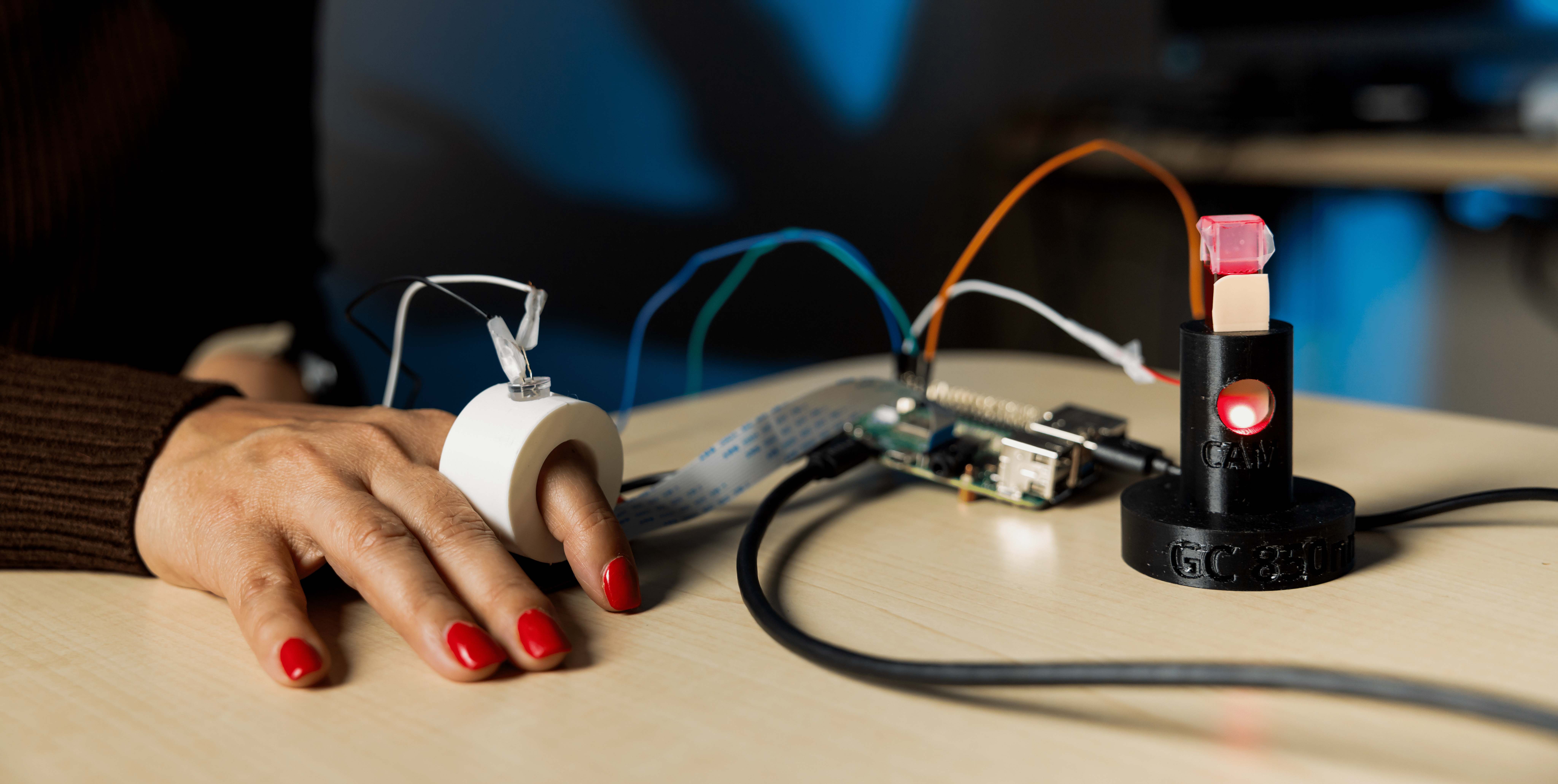Around 30 million Americans have diabetes. For many of them, they take out a blood glucose device multiple times to prick their fingers and test their blood sugar levels.
It’s an uncomfortable feeling that millions of people disrupt their lives to treat. Unless a person switches to continuous glucose monitors—connected at all times to the user—it still causes discomfort, can cost thousands of dollars every year, and requires regular calibration with fingerstick blood glucose devices. So, even when those with diabetes attempt to alleviate the hassle and cost, there’s not a simple solution available.
Kennesaw State researcher Maria Valero is working to change that. She explains, “Knowing the circumstances surrounding diabetes treatment, I wanted to create something less invasive.”
Valero, an assistant professor of information technology at Kennesaw State’s College of Computing and Software Engineering (CCSE) and director of KSU’s Internet of Things (IoT) as a Service Research Group, is on a mission to improve the glucose monitoring process for people affected by diabetes worldwide.
Valero and her team created a noninvasive process that can identify the exact value of blood glucose. The device is called GlucoCheck, a ring-like sensor that uses light absorption technology and artificial intelligence to provide accurate readings in real time. GlucoCheck currently surpasses traditional glucometers with up to 90% accuracy.
The GlucoCheck process shines a light through human tissue and uses a small camera to capture images on the other side.
Valero’s team then studies the amount of light absorption in those images to determine blood glucose concentration. The process sounds simple now, but it took countless hours of research and experimentation to reach this point.
“Our pilot study was very successful,” Valero said, the relief and enthusiasm clear in her voice. “We are excited about how this device will help people with diabetes, which affects about one in 10 people in the United States.”
Maria Valero
Valero has been awarded a Georgia Research Alliance (GRA) grant and has received funding through the a2 Collective, a program aimed at accelerating the use of AI and emerging technologies to enhance health outcomes for older Americans. Valero is working with the University of Pennsylvania on the a2 Collective program, which is funded by the National Institute on Aging, part of the National Institutes of Health, to focus on bringing the technology from a conceptual stage to people across the country.
She attributes the project’s success thus far to a robust effort between students, faculty, and external collaborators.
“We’re fortunate to have specialists in health science, engineering, and information technology contributing their expertise,” Valero said. “This teamwork not only sparks creativity but also pushes our research and development, allowing us to turn this innovative solution into reality more efficiently.”
Valero and her team took the next step by filing a full patent application with the U.S. Patent and Trademark Office to protect the process they created. Assistant Vice President for Innovation and Commercialization and Director of Kennesaw State’s Office of Intellectual Property Development Chris Cornelison held an instrumental role in this phase, helping Valero sift through research projects around the world to make sure that GlucoCheck is unique and patentable.
“The way we gather and output the data is novel, and we will continue to work on ways to improve the glucose estimation model,” Valero said. So far, they tested the process on more than 100 people in addition to in vitro experiments using artificial blood and skin.

Valero’s students, inspired by her dedication and vision, created the mobile phone application and are working on connecting GlucoCheck to Amazon’s virtual assistant, Alexa.
“I am very fortunate to have great students who are extremely motivated and bring a wealth of knowledge to this project,” Valero said. “Watching them grow as researchers who want to make a difference in the world using technology is very rewarding.”
Now, the mobile app incorporates vision recognition. When the user takes a photo of the food they plan to eat, the app automatically recognizes everything on the plate. With 95% accuracy, it estimates the volume of the food and the amount of micronutrients. GlucoCheck, in tune with its food recognition system, provides people a deeper overview of their current glucose levels and how their levels will behave after eating.
CCSE Dean Sumanth Yenduri sees Valero’s efforts as a prime example of KSU’s dedication to making a difference in people’s lives through research.
“Valero’s work exemplifies the innovative spirit of Kennesaw State University,” Yenduri said. “The GlucoCheck project not only advances technology but also addresses critical healthcare challenges. We are proud to support her and others across the college who continue to push boundaries.”
Valero works closely with Katherine Ingram, associate professor of exercise science, Luisa Valentina Nino, assistant professor of industrial and systems engineering, and El Arbi Belfarsi, a Ph.D. student. Ingram, who researches gestational diabetes risk, shares Valero’s drive to change lives through research. Nino, similarly, works hard to make the app functional.
Now, millions can look forward to having a better way to manage diabetes. Which further bolsters our mission of creating a positive impact by turning world-class research into real world solutions.